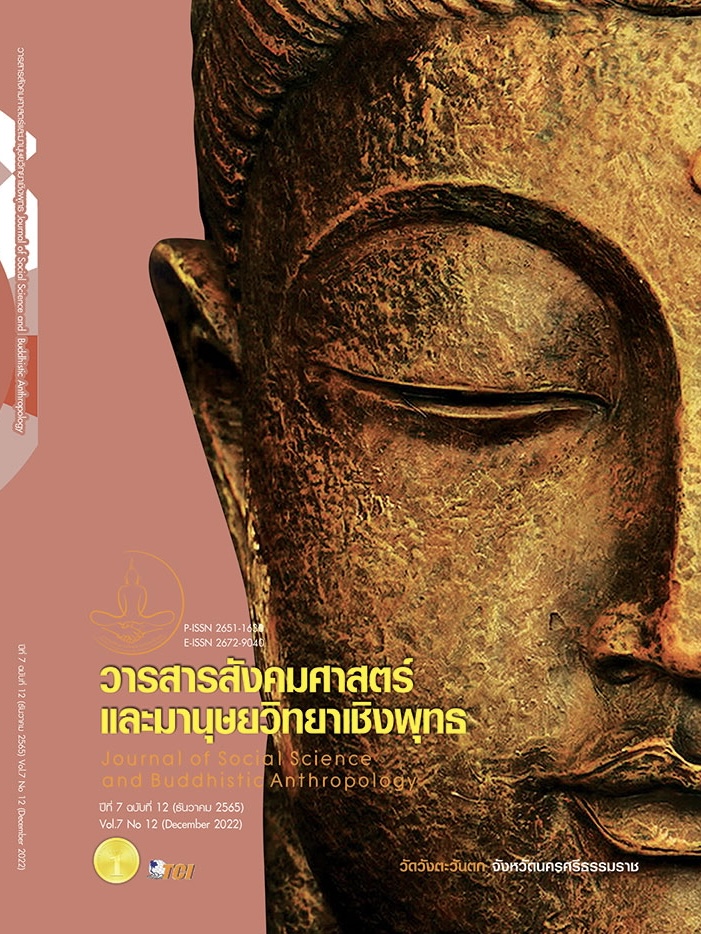EFFECTS OF USING A CONCEPT ATTAINMENT INSTRUCTION MODEL ON MATHEMATICS LEARNING ACHIEVEMENT AND RETENTION OF UNDERGRADUATE STUDENTS IN ELEMENTARY EDUCATION PROGRAM
Keywords:
Concept Attainment Instruction Model, Mathematics Learning Achievement, Learning RetentionAbstract
The objectives of this research article were 1)to compare mathematics learning achievement before and after teaching by using Concept Attainment Instruction Model for undergraduate students in elementary education program 2) to compare mathematics learning retention before and after teaching by using Concept Attainment Instruction Model for undergraduate students in elementary education program. The sample group used in this research was students of the major in elementary education program. Registered for the CEE3202 course, mathematics for elementary teachers in the first semester of academic year 2018, Faculty of Education Ramkhamhaeng University, 100 students by simple random sampling. Research tools included learning management plans using Concept Attainment Instruction Model that covers elementary mathematics content. The research instruments were the mathematics achievement tests. The data were analyzed by means of arithmetic mean, standard deviation and t – test. The results of this research were as follows 1.Learning activities using Concept Attainment Instruction Model with mathematics achievement after learning ( = 58.56, S.D = 14.44) higher than before learning (
= 26.93, S.D = 10.80) with statistical significance at the level of .05 2.Learning activities using Concept Attainment Instruction Model with average mathematics learning retention after studying (
= 61.07, S.D = 5.62) higher than before learning (
= 58.56, S = 5.41) with statistical significance at the level of .05
References
กระทรวงศึกษาธิการ. (2551). หลักสูตรแกนกลางการศึกษาขั้นพื้นฐาน พุทธศักราช 2551. กรุงเทพมหานคร: โรงพิมพ์ชุมนุมสหกรณ์การเกษตรแห่งประเทศไทย.
เกรียงศักดิ์ เจริญวงศ์ศักดิ์. (2555). การคิดเชิงมโนทัศน์. กรุงเทพมหานคร: ซัคเซส มีเดีย.
ไมตรี อินทร์ประสิทธิ์ และคณะ. (2546). การปฏิรูปกระบวนการเรียนรู้วิชาคณิตศาสตร์ในโรงเรียนโดยเน้นกระบวนการทางคณิตศาสตร์. ขอนแก่น: ขอนแก่นการพิมพ์.
ภมรเมษย์ เลาหวิรุฬห์กุล. (2558). ผลของการจัดกิจกรรมการเรียนรู้คณิตศาสตร์โดยใช้รูปแบบการเรียนการสอนคณิตศาสตร์ที่เน้นความเข้มข้นของมโนทัศน์ที่มีต่อมโนทัศน์ทางคณิตศาสตร์และความสามารถในการเชื่อมโยงความรู้ทางคณิตศาสตร์ของนักเรียนระดับชั้นมัธยมศึกษาปีที่ 4. ใน วิทยานิพนธ์การศึกษามหาบัณฑิต สาขาวิชาการศึกษาคณิตศาสตร์. จุฬาลงกรณ์มหาวิทยาลัย.
ภูมิฤทัย วิทยวิจิน. (2556). ผลของการจัดกิจกรรมการเรียนรู้คณิตศาสตร์โดยใช้กลวิธีการสร้างมโนทัศน์ของCANGELOSI ที่มีต่อความคงทนในการเรียนและความสามารถในการให้เหตุผลทางคณิตศาสตร์ของ นักเรียนมัธยมศึกษาปีที่ 3. ใน วิทยานิพนธ์การศึกษามหาบัณฑิต สาขาวิชาการศึกษาคณิตศาสตร์. จุฬาลงกรณ์มหาวิทยาลัย.
สถาบันส่งเสริมการสอนวิทยาศาสตร์และเทคโนโลยี. (2555). ทักษะและกระบวนการทางคณิตศาสตร์. กรุงเทพมหานคร: 3-คิว มีเดีย.
สายพิณ ล้ำเลิศ. (2559). ผลของการจัดกิจกรรมการเรียนรู้คณิตศาสตร์โดยใช้กระบวนการ RMT ร่วมกับแนวคิดการเสริมต่อการเรียนรู้ที่มีต่อมโนทัศน์และความสามารถในการแก้ปัญหาทางคณิตศาสตร์ของนักเรียนชั้นมัธยมศึกษาปีที่ 3. วารสารอิเล็กทรอนิกส์ทางการศึกษา, 11(1), 361-377.
สุธารัตน์ สมรรถการ. (2565). การพัฒนารูปแบบการเรียนการสอนตามแนวคิดรูปแบบการปรับมโนทัศน์และรูปแบบการแปลงของเลช เพื่อเสริมสร้างมโนทัศน์ทางคณิตศาสตร์ของนักเรียนระดับมัธยมศึกษาตอนต้น. วารสารสังคมศาสตร์และมานุษยวิทยาเชิงพุทธ, 7(4), 259-276.
อัมพร ม้าคนอง. (2553). การพัฒนาหลักสูตรแลการเรียนการสอนคณิตศาสตร์. ใน เอกสารประกอบการสอนรายวิชา 2704643 . ภาควิชาหลักสูตรและการสอน คณะครุศาสตร์ จุฬาลงกรณ์มหาวิทยาลัย.
Ausubel, D.P. . (1968). Educational psychology: A cognitive. New York: Rinegart and Winston.
Cockburn, A., & G. H. Littler. (2010). The Upper Students Conceptions and Misconceptions about Photosynthesis in Khon Kaen, Thailand. ใน research report. SEAMEORECSAM.
David, J. & Maher, W. . (1993). Strategies and models for teachers: Concept Attainment Instruction Model. Boston: Pearson.
Heaton, R. M. (1992). Who is minding the mathematics content: A case study of a fifth grade teacher. Elementary School Journal, 93(2), 153-162.
Kinard, T & Kozulin, A. (2008). Rigorous Mathematical Thinking: Conceptual formation in the Mathematics classroom. Cambridge: Harvard University Press.
Lasley, T. J., & Matczynski, T. J. (2002). Instruction model: strategies for teaching in a diverse society. Belmont CA: Wadworth.
Ornstein, A. C., & Hunkins, F. P. (2004). Curriculum: Foundations, principals and issues (4th ed.). Boston: Allyn & Bacon.
Schoenfeld, Alan H. (1992). “Learning to Think Mathematically: Problem Solving, Metacognition, and Sense Making in Mathematics.” In Handbook of Research on Mathematics Teaching and Learning. A Project of the National Council of Teachers of Mathematics. Grouws, Douglas A., editor. New York: Macmillan.
Simon, M. (1993). Prospective teachers’ knowledge of division. Journal for Research in Mathematics Education, 24(3), 233-254.
Wilson, J. W. (1971). Evaluation in Secondary School Mathematics. Handbook on Formative and summative Evaluation of student learning. New York: McGraw-Hill.
Downloads
Published
How to Cite
Issue
Section
License
Copyright (c) 2022 Journal of Social Science and Buddhistic Anthropology

This work is licensed under a Creative Commons Attribution-NonCommercial-NoDerivatives 4.0 International License.








